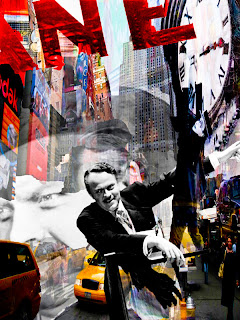This would have to be my new favourite film! Even as I’m writing this blog, only just having finished watching it for the first time, Alfred Hitchcock’s 1958 masterpiece, Vertigo, will be indelibly etched on my mind! I’m still shaking from this beautiful nightmare of obsession....with a killer twist!
Set in San Francisco, James Stewart portrays an acrophobic (someone with an irrational fear of high places...you’re welcome!) detective hired to trail a friends suicidal wife (Kim Novak...hotototototot!) After he successfully rescues her from a leap into the bay, he finds himself becoming obsessed with the beautifully troubled woman.
What makes this film outstanding to me is yes, it’s full of Hitchcock’s masterful camera angles and special effects, but what I see in Vertigo is a story with true human emotion which no other Alfred Hitchcock movies offer, adding a new creatively pleasing dimension to his work.
Jimmy Stewart is wonderful yet again and portrays his most brilliant and complex character. He represents everyman and is incredibly easy to identify with.
The most exciting element in this film for me is The “Vertigo Effect”. As a filmmaker this shot, used to dizzy the audience and thus put them in the characters perspective, is worthy of inspiration and imitation. And it has been imitated by the best. Steven Spielberg used this shot in JAWS...in the beach scene. The famous Vertigo shots were done with miniatures laid on their sides, since it was impossible to do them vertically. The view down the mission stairwell cost $19,000 for just a couple of seconds of screen time.
Nuns scare me...so I found the climax scene disturbing. Kinda had to turn my lamp on a little...
Vertigo is one of cinema’s most chilling romantic endeavours: it’s fascinating myriad of haunting camera angles shot among some of San Francisco’s renowned landmarks. This film is a must see for movie buffs! A genuinely great motion picture that demands multiple viewings!








